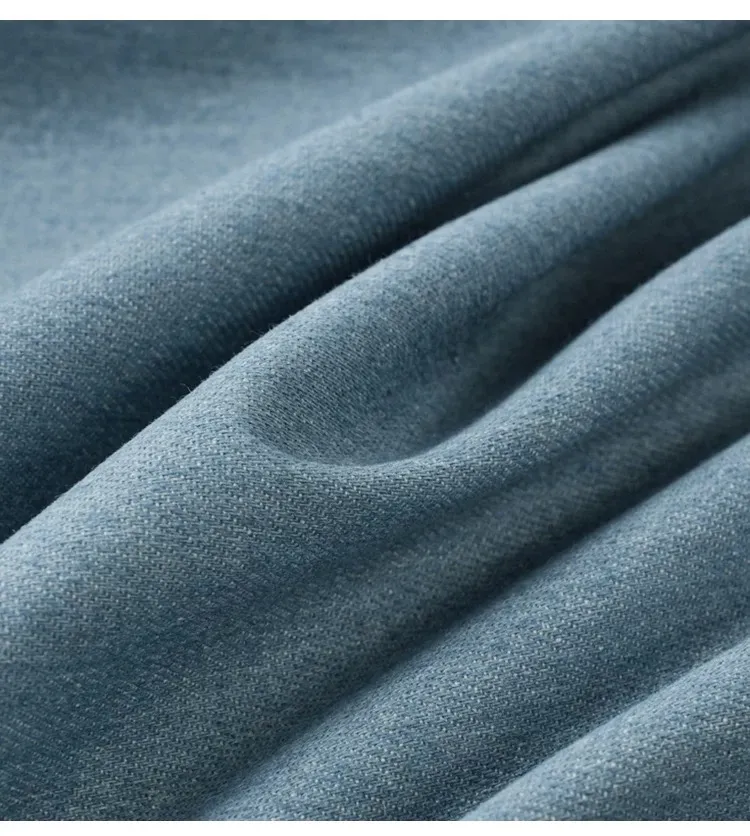The Enduring Magic of Indigo Blue: Transforming Dyeing Techniques
Indigo blue has held a special place in dyeing traditions for centuries, valued for its rich, versatile hue and timeless appeal. This iconic color remains a favorite in the textile industry, particularly in denim production, where it is celebrated for its durability and unique aesthetic. This article explores the techniques of indigo blo, how to blend indigo blue powder for perfect results, and the precise steps of indigo dyeing, offering a detailed look at why this color continues to captivate.

What Are the Dyeing Techniques of Indigo Blue?
Dyeing with indigo blo involves a blend of traditional methods and modern innovations to create stunning results. Among the most popular techniques is vat dyeing, where indigo blue powder is reduced into a water-soluble state and applied to fibers, ensuring deep and even coverage.
Another widely used method is dip dyeing, which allows for layering the color in stages. By repeatedly immersing fabrics in indigo dye, manufacturers achieve varying depths of blue, from light to intensely rich tones.
For artistic expressions, tie-dyeing and brush dyeing bring out the versatility of indigo blo. These methods create intricate patterns and designs, adding unique textures to textiles. Each technique highlights the adaptability of indigo dye, making it indispensable for diverse applications, from artisanal crafts to mass production.
How to Blend Indigo Blue Powder for Ideal Dyeing Results
Blending indigo blue powder effectively requires precision to achieve the desired tone and depth. The process begins by carefully dissolving the powder into water, where reducing agents transform it into a soluble form. This step is crucial, as it ensures that the indigo dye binds uniformly to fibers.
The concentration of indigo blo and the duration of exposure to the dye bath are key factors in obtaining consistent results. Natural fibers like cotton and wool absorb indigo dye most effectively when the solution is maintained at a balanced pH level and optimal temperature.
Blending can also involve combining indigo blue powder with other natural dyes to create complementary shades. For instance, mixing with turmeric yields greenish tones, while madder introduces subtle purples. These blends expand the creative possibilities for textiles, ensuring that indigo blo remains a versatile and dynamic choice.
Step-by-Step Process of Indigo Blue Dyeing
The art of indigo blue dyeing unfolds in a series of carefully executed steps, each essential to achieving vibrant and durable results.
The first step is preparing the dye bath, where indigo blue powder is dissolved into water, creating a solution that turns yellow-green when reduced. This stage ensures that the dye is ready to penetrate fibers.
Next, the fabric must be pre-treated to remove any impurities, such as oils or residues, which might block the absorption of the indigo dye. Soaking the fabric in water primes it for even coloring.
Dyeing begins with immersing the fabric in the dye bath. As the fabric is removed and exposed to air, the oxidation process transforms the yellow-green color into the classic indigo blo shade. This step can be repeated multiple times for deeper tones, depending on the desired outcome.
Once the dyeing is complete, the fabric is rinsed thoroughly to remove excess dye. Applying a mordant or fixer enhances the color’s longevity and prevents fading. Finally, the fabric is air-dried in a shaded area, ensuring that the brilliance of indigo blo is preserved.
Why Indigo Dye for Jeans Stands Out
The denim industry owes much of its global appeal to the enduring qualities of indigo dye for jeans. Unlike synthetic dyes, indigo blo creates a natural, lived-in look over time, with fading patterns that add character to the fabric.
The versatility of indigo dye for jeans allows manufacturers to experiment with a wide range of finishes, from raw denim to distressed and vintage styles. Additionally, its eco-friendly nature, particularly when derived from sustainable sources, makes it a responsible choice for environmentally conscious brands.
The result is a product that combines durability with timeless aesthetics, making indigo blo an integral part of denim’s legacy.
Indigo Blue:The Timeless Appeal of Indigo
Indigo blue continues to thrive in the world of dyeing, embodying a perfect balance between tradition and innovation. Its unmatched ability to adapt to various techniques and materials ensures its place as a staple in textile production.
Whether used in fashion, home decor, or artisanal crafts, the depth and beauty of indigo dye inspire creativity and admiration. With its versatility and sustainability, indigo blo remains a symbol of enduring quality, standing the test of time in an ever-evolving industry.
-
The Timeless Art of Denim Indigo Dye
NeiegkeetenJul.01,2025
-
The Rise of Sulfur Dyed Denim
NeiegkeetenJul.01,2025
-
The Rich Revival of the Best Indigo Dye
NeiegkeetenJul.01,2025
-
The Enduring Strength of Sulphur Black
NeiegkeetenJul.01,2025
-
The Ancient Art of Chinese Indigo Dye
NeiegkeetenJul.01,2025
-
Industry Power of Indigo
NeiegkeetenJul.01,2025
-
Black Sulfur is Leading the Next Wave
NeiegkeetenJul.01,2025

Schwiewel Schwaarz
1.Name: sulphur black; Sulfur Black; Sulphur Black 1;
2.Structure formula:
3.Molecule formula: C6H4N2O5
4.CAS No.: 1326-82-5
5.HS code: 32041911
6.Product specification:Appearance:black phosphorus flakes; black liquid

Bromo Indigo; Vat Bromo-Indigo; C.I.Vat Blue 5
1.Name: Bromo indigo; Vat bromo-indigo; C.I.Vat blue 5;
2.Structure formula:
3.Molecule formula: C16H6Br4N2O2
4.CAS No.: 2475-31-2
5.HS code: 3204151000 6.Major usage and instruction: Be mainly used to dye cotton fabrics.

Indigo Blue Vat Blue
1.Name: indigo blue,vat blue 1,
2.Structure formula:
3.Molecule formula: C16H10N2O2
4.. CAS No.: 482-89-3
5.Molecule weight: 262.62
6.HS code: 3204151000
7.Major usage and instruction: Be mainly used to dye cotton fabrics.

